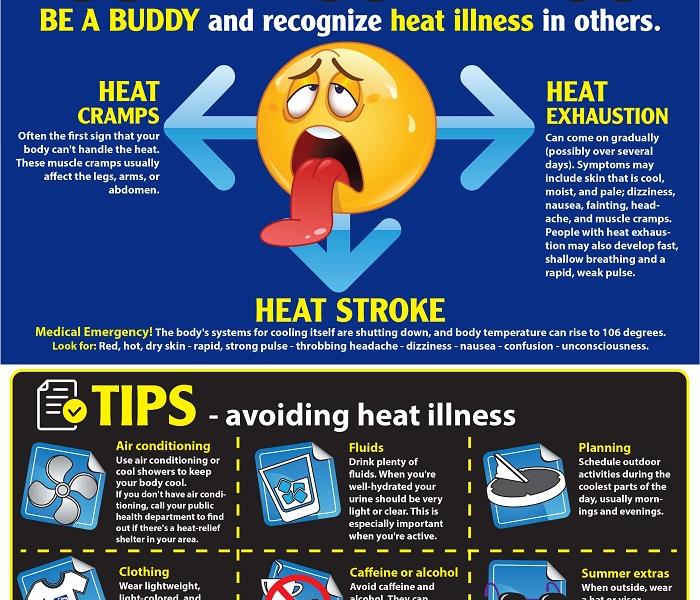Extreme Safety Tips
5/6/2020 (Permalink)
As summer approaches, it is time to consider safety precautions for extreme heat in the coming months. Heat affects all people, but especially the young, elderly, sick and overweight. According to the EPA, "the sun can heat dry, exposed urban surfaces, such as roofs and pavement, to temperatures 50-90 degree hotter than the air, while shaded or moist surfaces-often in more rural surroundings-remain close to air temperatures."
If you must go outside, wear loose-fitting, light-colored clothing, and be sure to apply sunscreen often. Pay attention to signs of heat exhaustion, which are heavy sweating; weakness; cold, pale and clammy skin; nausea or vomiting; and fainting according to the Center for Disease Control and Prevention (CDC). Heat exhaustion can lead to heat stroke, which is life-threatening. Signs of heat stroke are a high body temperature (103+), rapid and strong pulse, and possible unconsciousness. If you think someone has heat stroke, call 911 immediately and move the person somewhere cool.
Extreme heat is a serious danger. For more information on preparation and prevention, visit ready.gov or cdc.gov.





 24/7 Emergency Service
24/7 Emergency Service